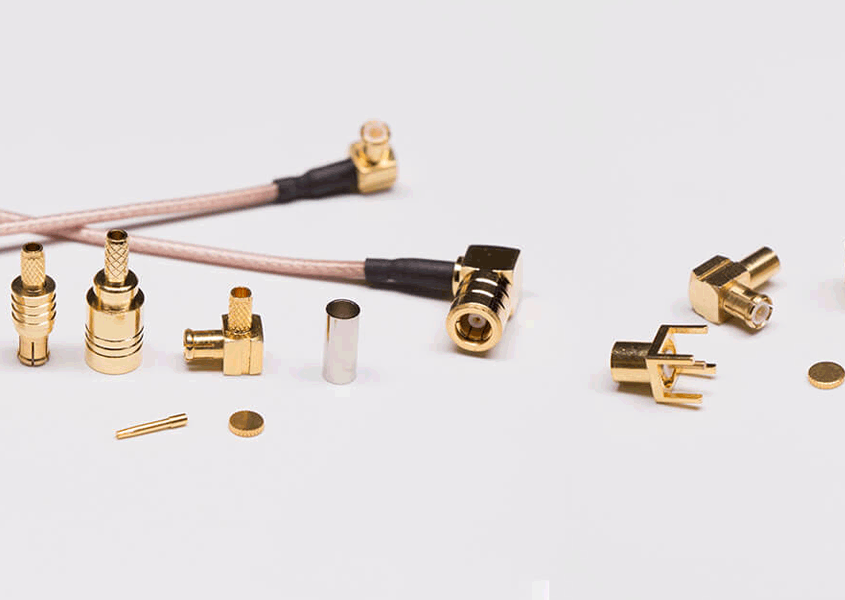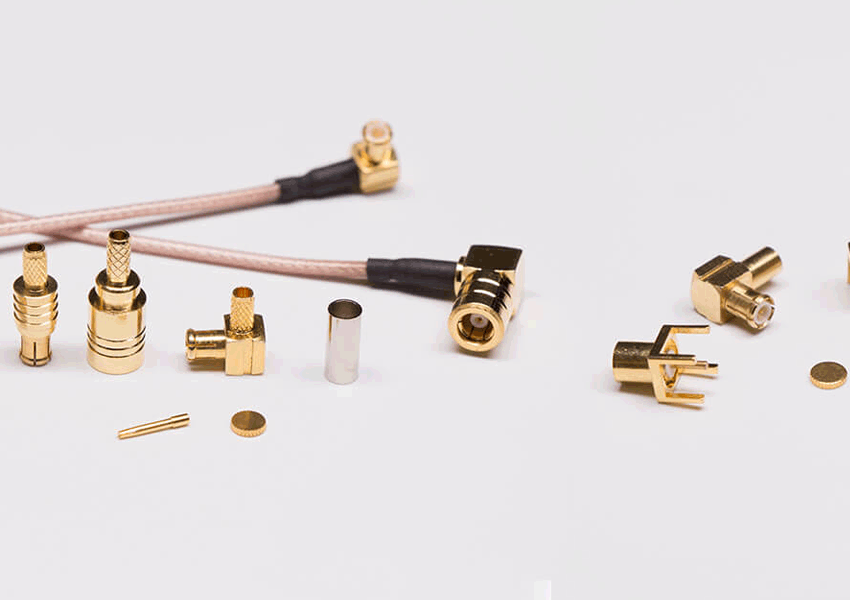For antenna applications, ultra-small A (SMA) Connector solutions that provide bridging between RF and microwave are available for standard and reverse polarity. They are usually designed for the frequency range from DC to 18GHz, have a characteristic impedance of 50Ω, and have a threaded coupling mechanism to achieve a safe connection even in a high-vibration environment.
The SMA Connector product category includes standalone connectors and pre-assembled cable assemblies with adapters that allow a variety of standard SMA Connector solutions to meet a wide range of application requirements. Connector options include PCB and panel mounting options with right-angle or linear orientation, rear-mounted spacer and flange mounting options, and multiple termination types based on the selected style.
The transmission efficiency is solved by strengthening the mechanical features in the connector. Many SMA RF coaxial connectors on the market use a right-angle configuration as the main reference point, aiming to keep the impedance at 50Ω. Due to internal mechanical limitations, single pin and soldered two-piece pin designs are the most widely used. Impedance mismatch may be caused by internal mechanical structure failure, inaccurate dimensions, and improper volume of solder paste at the solder joints of the two-piece design. Design single-pin right-angle connectors to minimize signal loss caused by bends.

Another consideration in the design of right-angle SMA RF coaxial connectors is the volume of air around the contacts, because impedance mismatch usually occurs at the bend of the center contact. In a two-piece design, the volume of air and PTFE must be accurately calculated to minimize impedance mismatch.
There are also several ways to optimize transmission lines with end launch connectors, including designs that adapt to various PCB thicknesses. These options provide different levels of mechanical stability and affect the transmission lines designed on the PCB. The contact area between the soldering end of the center contact and the PCB transmission line is the key to achieving impedance matching and obtaining a good result of good transmission. When the impedance deviation in the contact area is small, it is easier to achieve a higher frequency.
In order to achieve 50Ω impedance matching, the transmission line on the PCB should ideally be designed to have a lower impedance to compensate for the increase in impedance of the contact area where the welding end and the transmission line meet. For frequencies above 6GHz, smaller and thinner flat pins can be used on the transmission line to reduce the impact of impedance mismatch. In these types of high-frequency applications, the cylinder usually requires more effort to achieve acceptable impedance due to its mechanical structure. However, from a mechanical point of view, cylinders are stronger than flat pins and may be more easily damaged during assembly and production.
Standards and protocols including 3G, 4G LTE, 5G, Wi-Fi, Bluetooth and other IoT communication systems are widely used in the consumer, medical, industrial, data communication and telecommunications markets. SMA connectors are usually optimized for frequencies below 6 GHz, which helps illustrate their broad appeal. However, the SMA connector provided by Renhao can work in the frequency range from DC to 18GHz, providing product designers in these and other markets with higher design flexibility.
In addition to different pin and transmission line designs, customers can also achieve impedance matching by compensating the length of the through-hole components after assembly on the PCB (top left), thereby controlling the signal loss in the gap between the PCB and SMT components (higher than the center)) , And limit the size and height of the end launch connector in the transmission line design.
Applications that require the use of higher frequency SMA RF coaxial connectors encounter more difficulties in impedance matching during the design and test stages. Since the signal path between the connector and the PCB plays an important role in reducing impedance mismatch, it is very important to select the appropriate SMA connector and termination method in the early stage. Technologies such as through-hole reflow soldering technology (THR) provide designers with more options.
Pre-assembled coaxial cable assemblies can also be used for SMA plug to SMA plug and SMA plug to SMA bulkhead socket connections, as well as several different types of cables, from flexible cables to hand-formed cables. Flexible coaxial cable options include RG-58C/U, RG-174/U, RG-142/U, RG-316/U and RG-316 double braid, and hand-formable options include 0.141″ and 0.085″ cables.

